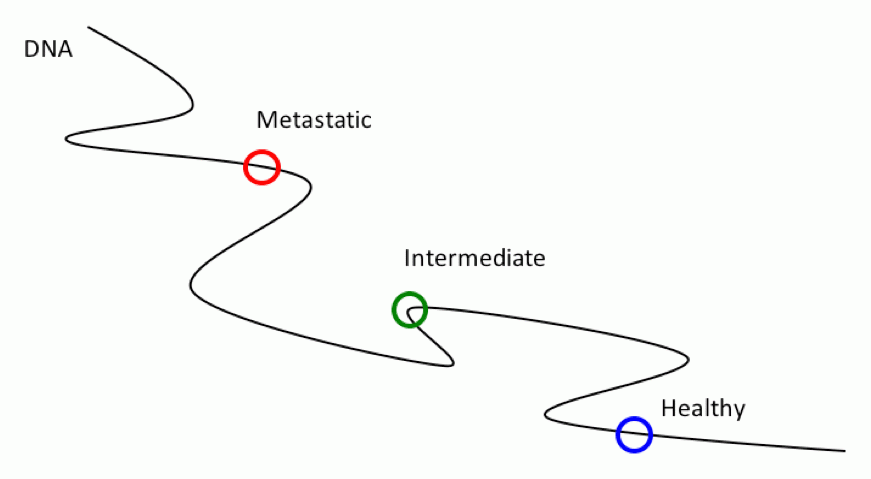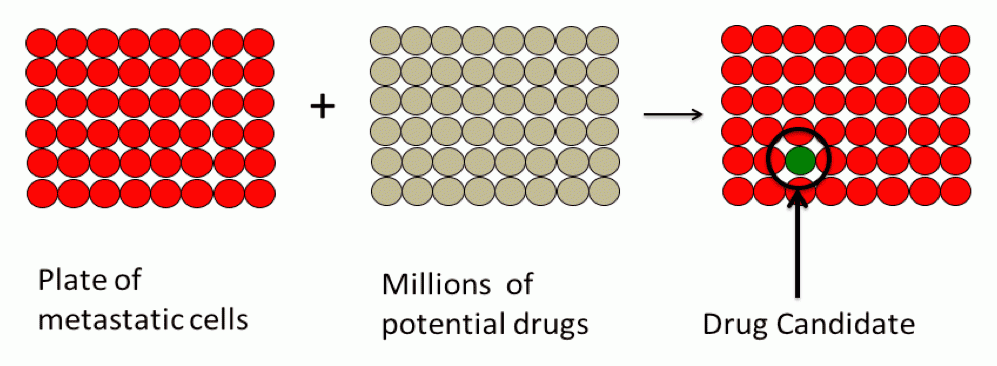Technicolor Technology
Allison Crimmins on October 24, 2015

Part of what makes Remedy Plan unique is the technology we’ve developed to test drugs for their ability to stop metastatic spread of cancer. We can’t give away all our secrets, but here is a short overview of how our technology works.
Recent breakthroughs in developmental biology have shown that there are certain parts of your DNA that are only “turned on” or active during specific stages of development. For example, there are segments of your DNA that are turned on only during early embryonic development, and then turned off for the rest of your life. These segments are dormant once you pass that stage of development.
Similarly, there are segments that are turned on when a cell is in later stages of development and turned off once its passed that stage. And there are pieces of your DNA that are only turned on when the cell is mature (basically from birth onwards). Think about what that means—that some portion of your DNA was used once and never again. It’s like the ugly sweater you bought for that one Christmas party that you’ll never wear again, but will forever remain in your closet.

That DNA segment that was active when you were an embryo, and which is dormant now, allowed your embryonic cells to have pretty special powers. It allowed your embryonic cells to clone themselves, multiply rapidly, move around and become new types of cells. And when this DNA segment was turned on, these cells were super strong and resistant. These are all important properties for an embryonic cell to have, but aren’t really needed once you’re born. So these DNA segments are turned off and the mature cells lose their abilities to multiply rapidly, or morph into both a nerve cell and a skin cell.
But in cancer, these embryonic-like properties somehow get turned back on. Now these cancer cells again have the ability to multiply rapidly and move around the body, and they are super resistant to things like chemotherapy and radiation. In a sense, a healthy cell becoming a cancer cell is like development in reverse. These abilities, which have been re-activated by these DNA segments turning back on, are what make metastatic cancer cells so dangerous.
This is where our technology comes in. We are able to tag different sections of DNA with a fluorescent protein so that the cell glows when that piece is active. When a DNA segment that is only turned on in mature, healthy cells is active, it will glow blue. And when a DNA segment that codes for the ability to spread rapidly throughout the body is turned on, it will glow red.

Note: We’re scientists, not artists.
This means that we are able to see when a cell is capable of dangerous metastatic spread.
And if we can see that a cell is metastatic, we can test drug components against it and see how metastatic it is after treatment. We start with a plate of cells that we’ve engineered to glow red because they are metastatic. Then we add a potential drug to the cell and test it again. Cells that turn from red to green (intermediate) to blue (healthy) demonstrate that the drug we’ve added has the ability to stop cancer from spreading in the body. It has disrupted the metastatic properties of that cell.

Now imagine doing what I’ve described times 500,000. This is called a drug screen, because we’re screening these drugs to see how effective they’ll be at stopping the spread of cancer. The reason we’re working so hard to raise money right now is to fund a drug screen of 500,000 potential drugs, which we’ll test and retest until we’ve developed promising drug candidates.
